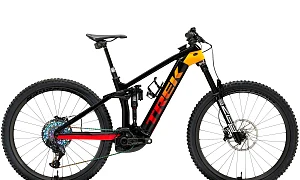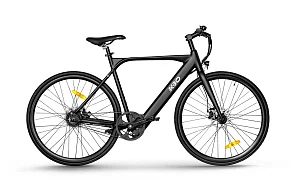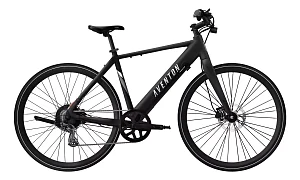Ever wondered if an e-bike could be your new favorite way to get around? Whether you're commuting, cruising the neighborhood, or just getting back into cycling, an entry-level e-bike is a fun, low-stress way to ride more often—with a lot less effort.
Entry-level e-bikes are electric bikes designed specifically for new riders. They’re simple to use, easy to maintain, and often much more affordable than high-end models. Think: no complicated settings, no steep learning curve—just hop on and ride.
Why E-Bikes Are Perfect for Beginners
Electric bikes give you a boost while pedaling, making hills feel flatter and long rides feel shorter. For beginners, this means:
- Less physical strain, more enjoyment
- More confidence to ride in traffic or on trails
- Fewer excuses to skip a ride
And thanks to improvements in battery and motor technology, even entry-level models in 2025 offer impressive range and reliability.
What Makes a Great Beginner E-Bike?
When you're just starting out, the best e-bike is one that feels easy and comfortable—without breaking the bank. Here’s what to look for:
- Simplicity: A clean interface, minimal buttons, and pedal-assist you can trust
- Affordability: Great models now start as low as $800–$1,500
- Comfort: Upright seating, cushy seats, and easy step-through frames
- Ease of Maintenance: Look for hub motors, sealed batteries, and sturdy components
- Range & Power: 20–40 miles is more than enough for most beginner riders
✅ Pro Tip: If it looks intimidating or too high-tech, skip it. Your first e-bike should feel as friendly as a cruiser bike—with a little extra magic under the hood.
Ready to find out which models are best for new riders? In the next section, we’ll break down the top beginner e-bikes of 2025, from budget-friendly cruisers to foldable city bikes and everything in between.
Key Features to Look for in a Beginner E-Bike
Not all e-bikes are created equal—especially if you’re a first-time buyer. Choosing the right entry-level model means focusing on what truly matters: comfort, simplicity, and reliability. Here’s a quick breakdown of the most important features in any good beginner e-bike.
Affordability: Spend Smart, Ride More
For most new riders, there's no need to spend $3,000+ on a high-end model. Some of the best e-bikes for beginners in 2025 sit comfortably in the $800 to $1,800 range. These bikes offer solid build quality, good battery life, and just the right amount of motor power—without the premium price tag.
✅ Pro Tip: Brands like Aventon, Ride1Up, and Lectric offer excellent beginner models under $1,500.
Ease of Use: Simple, Stress-Free Riding
You don’t need a tech degree to ride an e-bike—and your first one shouldn’t make you feel that way.
Look for:
- Step-through frames (easier to mount and dismount)
- Minimal controls (basic display, clear buttons)
- Pedal-assist systems that kick in naturally
- Optional thumb throttle for boost-on-demand (great for hills or takeoff)
A beginner-friendly e-bike should feel just like a regular bike—but with superpowers.
Low Maintenance: Ride More, Worry Less
As a first-time rider, the last thing you want is constant trips to the repair shop. Low-maintenance e-bikes keep things simple and smooth.
Here’s what helps:
- Hub motors (sealed and durable—fewer moving parts)
- Integrated batteries (easier to charge and less exposed to weather)
- Mechanical or hydraulic disc brakes (reliable stopping power in all weather)
⚙️ Did You Know? Hub motors are usually quieter and need less upkeep than mid-drive motors, making them perfect for beginners.
Comfort: Because Happy Riders Ride More
An e-bike should feel good from the moment you sit on it. For beginners, comfort is key—and can make the difference between a fun ride and a sore back.
Look for:
- Upright riding position to reduce strain on your back and wrists
- Front suspension forks to smooth out bumps and cracks
- Cushioned or wide saddles for extra padding
If your ride feels natural and relaxed, you're way more likely to use your bike daily.
Battery Range: How Far Is “Enough”?
When you’re just starting out, you don’t need a 100-mile range. Most new riders stick to short commutes, weekend rides, or casual errands. A range of 20–40 miles per charge is more than enough.
What affects range:
- Rider weight and terrain
- Level of pedal assist
- Battery size (measured in watt-hours or Wh)
And don’t worry—charging is as easy as plugging in a laptop.
With these key features in mind, you’ll be able to shop confidently—and avoid common first-time mistakes. Up next: we’ll walk through the top-rated beginner e-bikes of 2025 for every budget and lifestyle. Ready to find your match?
Best Entry-Level E-Bikes for 2025
Explore the top beginner e-bikes of 2025, organized by lifestyle and riding needs—from all-around champs to budget buys, foldable models, and light trail cruisers.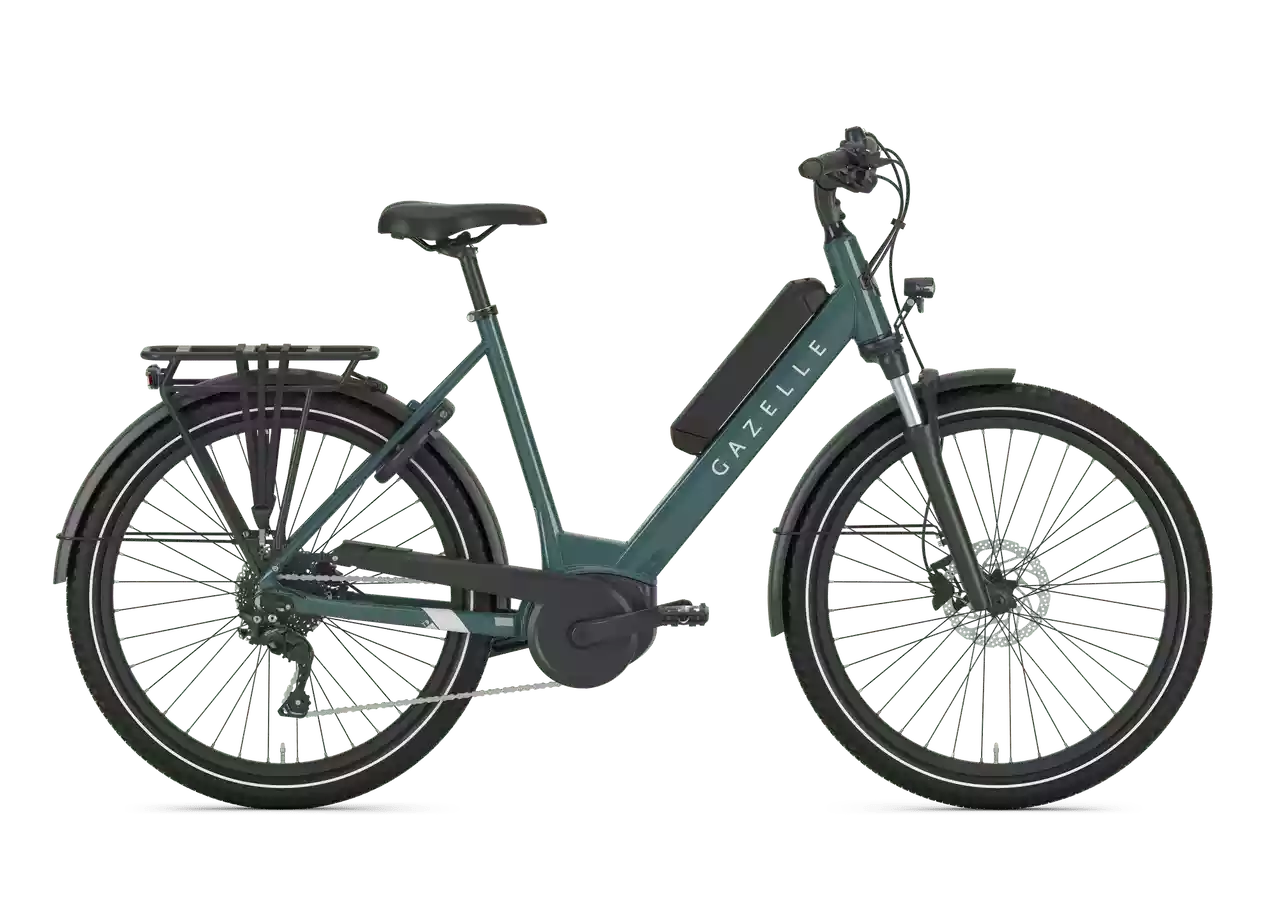
A. Best Overall Beginner E-Bike
Gazelle Medeo City T9
- Price Range: ~$2,299–$2,600
- Motor/Battery: Bosch Active Line mid-drive, 400Wh battery
- Top Speed: 20 mph
- Weight: 48.1 lbs
Why It’s Great for Beginners:
The Medeo City T9 nails the sweet spot between comfort, performance, and ease of use. Its smooth, quiet motor and stable frame make it approachable even if you haven’t biked in years. Upright posture and integrated features (rack, lights, fenders) make it ready for city life or weekend cruises.
✅ Pro Tip: Mid-drive motors like Bosch offer a more natural, balanced ride—perfect for longer commutes or mild hills.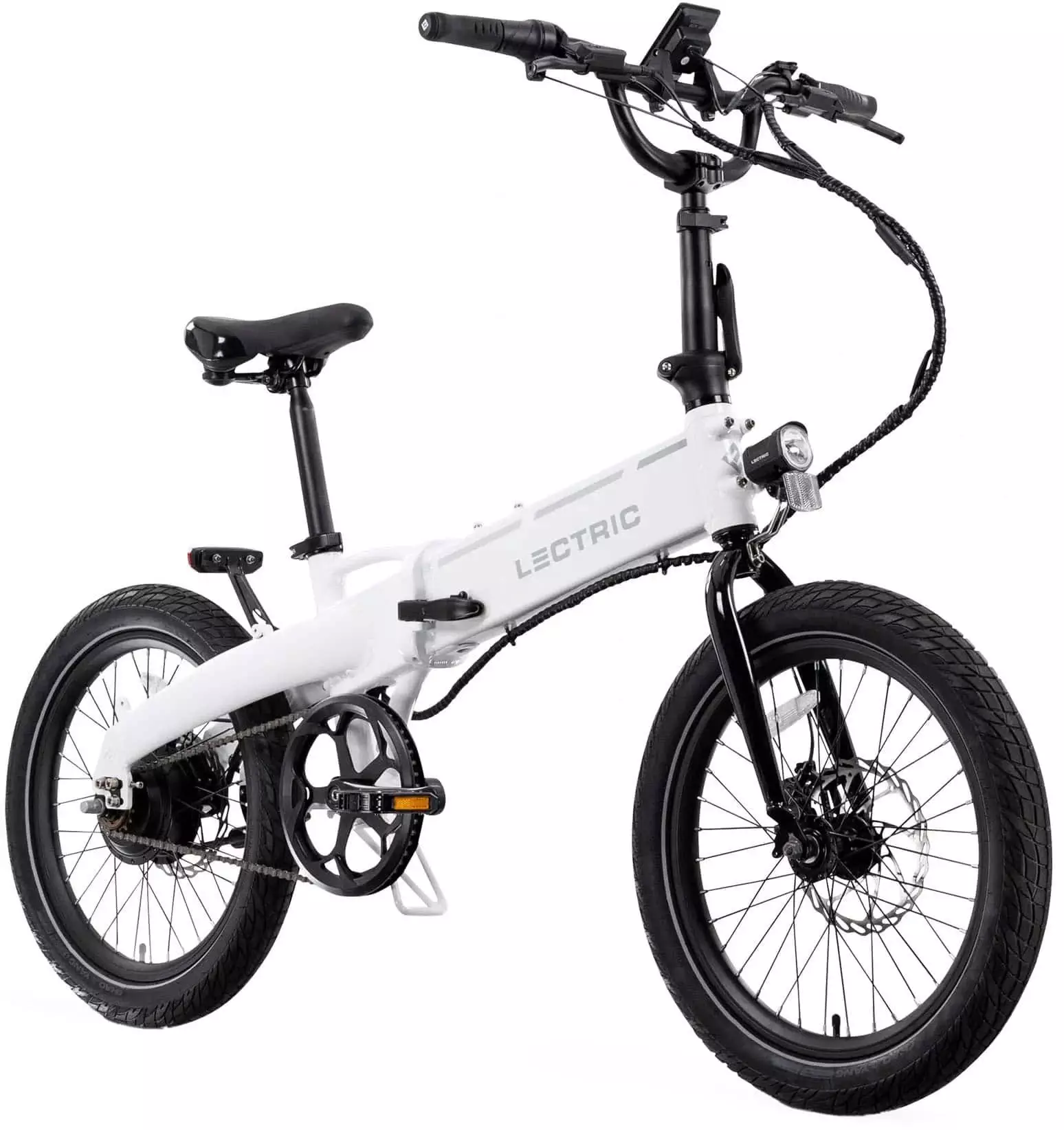
B. Best Budget E-Bike Under $1,000
Lectric XP Lite 2.0
- Price: $799
- Motor: 300W rear hub (peak 720W)
- Range: Up to 45 miles (80 with extender)
- Weight: 49 lbs
Why It’s a Top Pick for Budget Riders:
Affordable without feeling “cheap,” the XP Lite is ideal for students, new commuters, or anyone e-curious. Despite the price, it delivers real range and power, plus hydraulic disc brakes—a rare find under $1,000.
Watch Out For:
Single-speed gearing means it's best for flat areas. No suspension, but the ride remains smooth thanks to wide tires and stable geometry.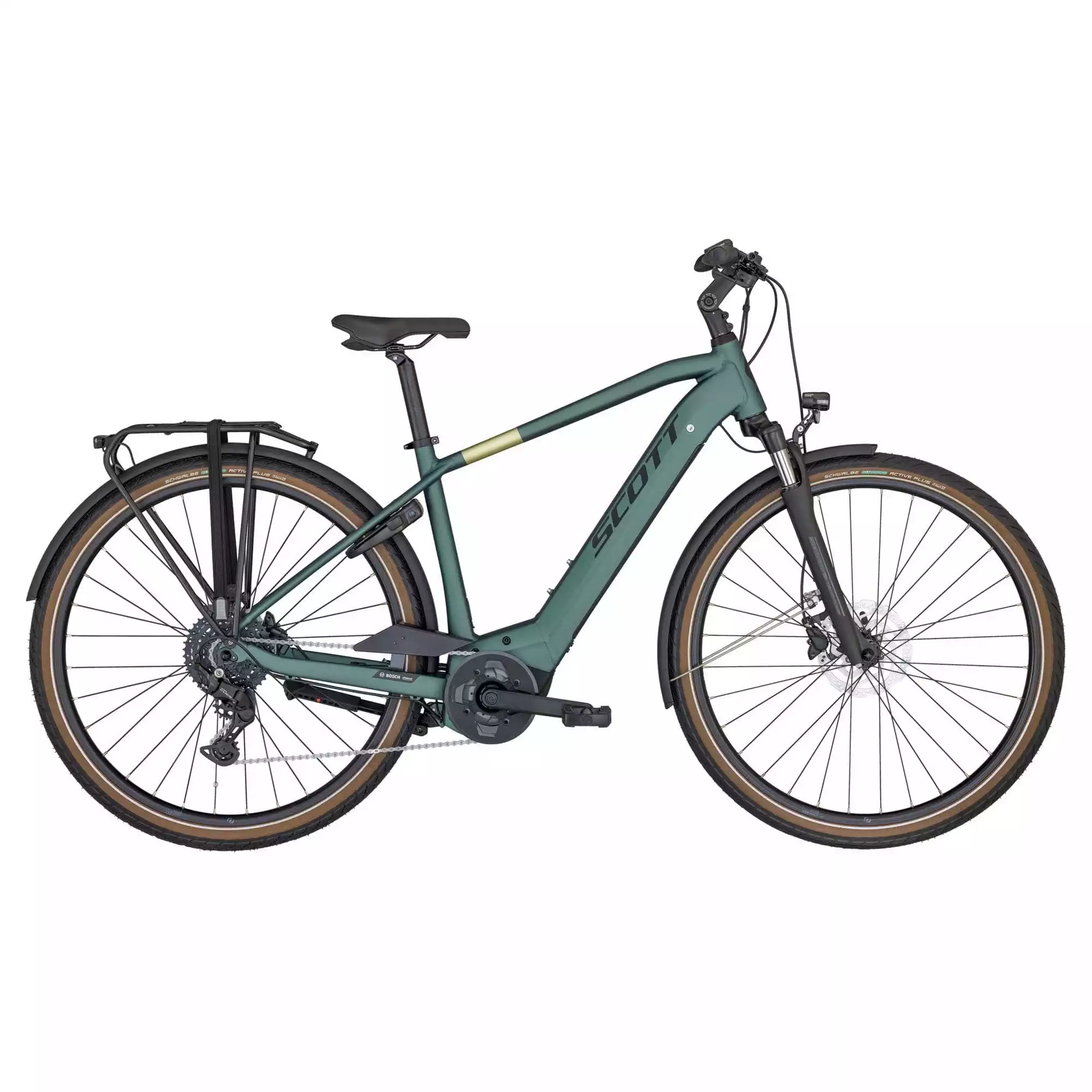
C. Best Step-Through E-Bike for Easy Mounting
Scott Sub Active eRide
- Motor/Battery: Bosch Active Line mid-drive, 400Wh
- Comfort Features: Suspension fork, wide tires, upright handlebars
- Extras: Built-in lock, lights, fenders, rear rack
Best For:
Seniors, shorter riders, or anyone who wants a stress-free, easy-on-and-off design. The frame is ultra-low and intuitive to mount, making it a favorite for comfort-first beginners.
⚙️ Pro Tip: Step-through bikes are especially helpful if you’ll be stopping frequently (errands, city riding, etc.).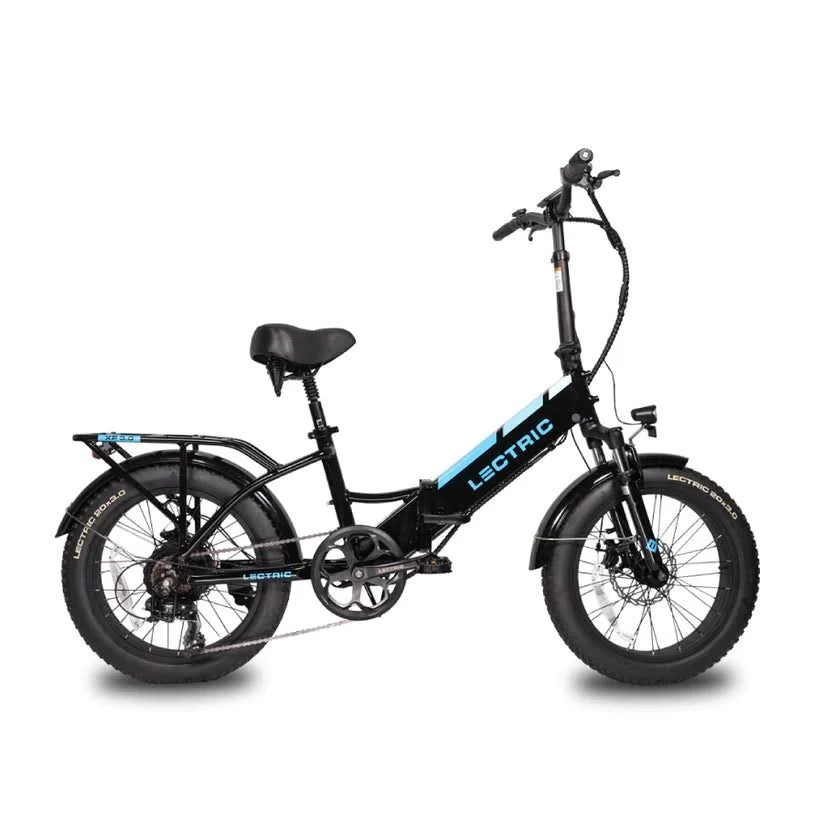
D. Best Folding E-Bike for Portability
Lectric XP 3.0 Step-Thru
- Folded Size: 37" x 18" x 28"
- Motor: 500W rear hub, ~500Wh battery
- Range: 20–45 miles
- Weight: 64 lbs
Perfect For:
Apartment dwellers, RV travelers, or anyone who wants to stash a bike in a closet or car trunk. It arrives fully assembled, folds quickly, and is easy to transport.
Why It’s Beginner-Friendly:
Great power-to-weight ratio, adjustable seating, and a very approachable price make this a top folding choice.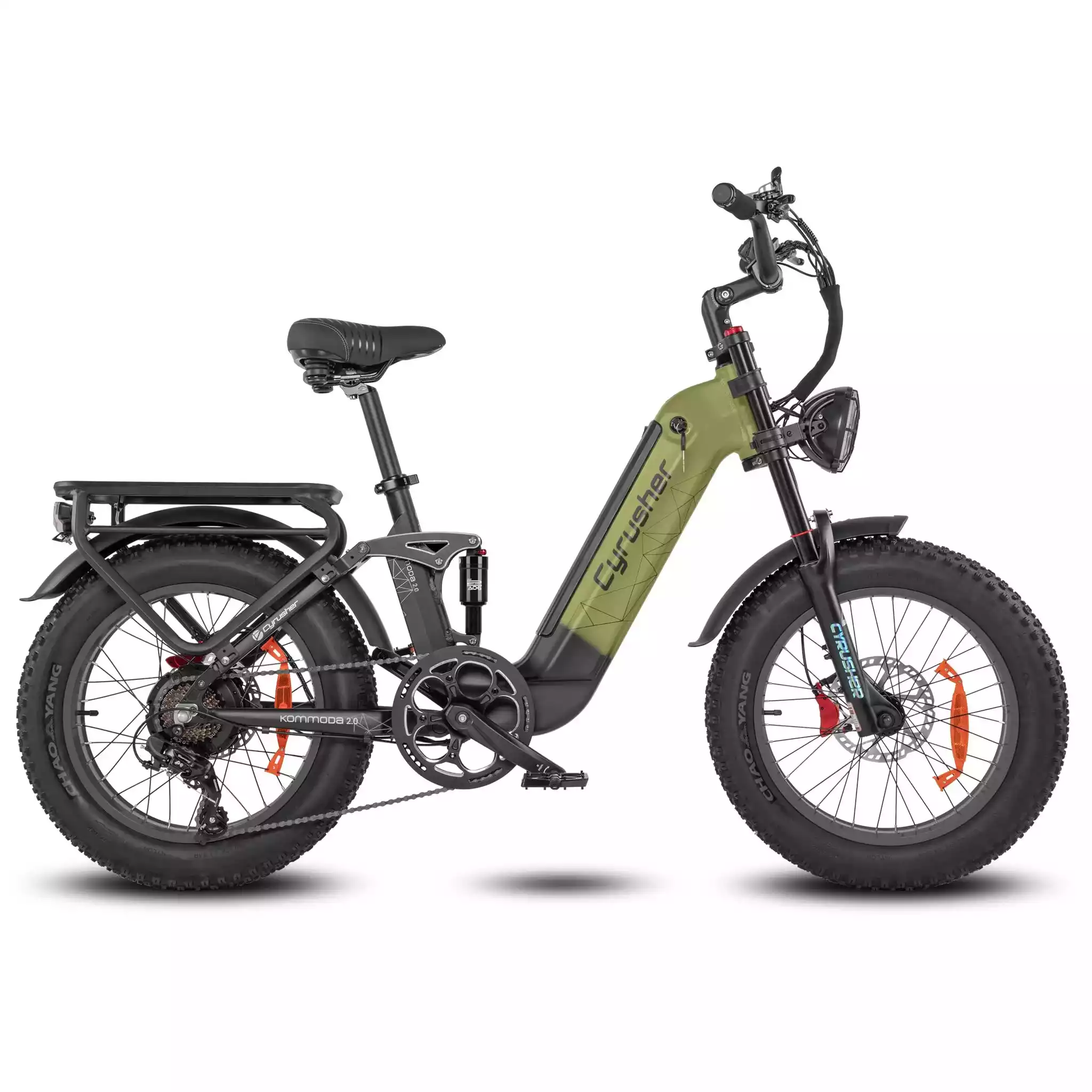
E. Best E-Bike for Urban Commuting
Cyrusher Kommoda 2.0
- Motor: 750W rear hub
- Battery: ~768Wh (varies by build)
- Range: Up to 68 miles
- Top Speed: 28 mph (Class 3)
- Commuter Perks: Integrated lights, fenders, suspension, cargo rack
Why Urban Riders Love It:
From stoplights to potholes, the Kommoda handles urban terrain with ease. It’s powerful yet easy to control, and its included accessories make daily commuting smoother—and safer.
🚲 Note: If you're new to higher speeds (28 mph), try starting with a lower assist level while getting comfortable.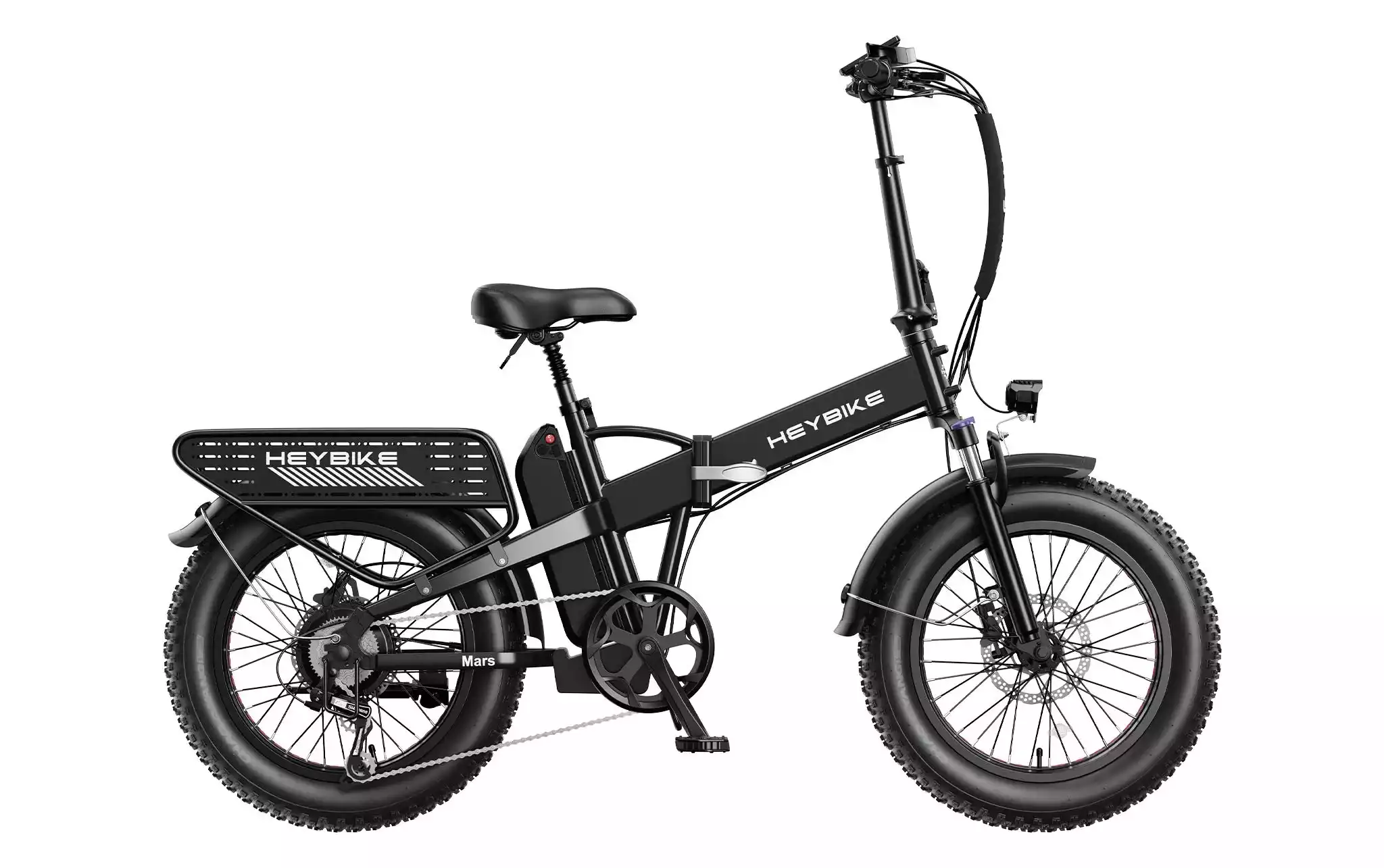
F. Best Trail-Ready Beginner E-Bike
Heybike Mars 2.0
- Price: $999
- Motor/Battery: 500W hub motor, 624Wh battery
- Range: ~45 miles
- Build: Front suspension, 4” fat tires, folding frame
Beginner-Friendly Dirt Riding:
Not quite a mountain bike, not just a city cruiser—the Mars 2.0 is perfect for gravel trails, park paths, and mild off-road exploring. The fat tires add grip and confidence while the build stays accessible and compact.
Good to Know:
No technical gear systems or advanced shocks—just the right mix of toughness and simplicity for your first trail adventure.
Quick Reference Table: Best Beginner E-Bikes 2025
| Category | Model | Price | Motor/Battery | Range | Highlights |
|---|---|---|---|---|---|
| Overall Pick | Gazelle Medeo City T9 | $2,299+ | Bosch mid / 400Wh | 35–50 miles | Comfort, mid-drive, premium feel |
| Budget Choice | Lectric XP Lite 2.0 | $799 | 300W rear / 48V | Up to 45 mi | Light, foldable, great value |
| Step-Through | Scott Sub Active eRide | $2,000+ | Bosch mid / 400Wh | 40+ miles | Low frame, comfort, city-ready |
| Folding | Lectric XP 3.0 Step-Thru | $999 | 500W rear / 500Wh | 20–45 mi | Fully assembled, compact, adjustable |
| Urban Commuter | Cyrusher Kommoda 2.0 | $1,699 | 750W rear / 768Wh | Up to 68 mi | Fast, loaded with commuter features |
| Trail Explorer | Heybike Mars 2.0 | $999 | 500W rear / 624Wh | ~45 mi | Fat tires, trail-friendly, affordable |
Whether you're commuting to work, hitting the park on weekends, or just getting back into biking, these entry-level e-bikes offer serious value, comfort, and fun. Each one is beginner-approved and built to make your first rides safe, smooth, and exciting.
Ready to ride? Let the right e-bike take you further—without the stress or the sweat.
Comparison Table of Recommended Models
Not sure which beginner e-bike is right for you? Let’s make it easy. Below is a quick side-by-side comparison of the best entry-level e-bikes of 2025, so you can find the perfect match for your budget, lifestyle, and riding goals.
This chart breaks down key features like price, motor type, range, weight, and frame style, helping you narrow your choices fast.
✅ Pro Tip: Don’t just look at speed or power—frame style, weight, and comfort features often matter more for day-to-day use, especially for new riders.
| Model | Price | Motor Type | Battery Range | Weight | Frame Style | Best For |
|---|---|---|---|---|---|---|
| Gazelle Medeo T9 City | $2,299+ | Bosch mid-drive | 35–50 miles | 48.1 lbs | Step-through | All-around beginner comfort |
| Lectric XP Lite 2.0 | $799 | 300W rear hub | Up to 45 miles* | 49 lbs | Low-step/folding | Budget commuting, students |
| Scott Sub Active eRide | ~$2,000+ | Bosch mid-drive | 40+ miles | 51 lbs | Extra-low step | Seniors or accessibility-focused riders |
| Lectric XP 3.0 ST | $999 | 500W rear hub | 20–45 miles | 64 lbs | Folding step-thru | Compact storage, mixed transit |
| Cyrusher Kommoda 2.0 | $1,699 | 750W rear hub | Up to 68 miles | 73 lbs | Step-through | Urban riders, long-range commutes |
| Heybike Mars 2.0 | $999 | 500W rear hub | ~45 miles | 66 lbs | Folding fat-tire | Beginner-friendly trail or gravel use |
*With optional range extender, where available.
This table is your at-a-glance e-bike buying guide for 2025. Whether you want the best value, the easiest ride, or something trail-ready, you’ll find a solid match in this lineup.
Next up: Let’s walk through some buying tips to make sure your first e-bike is a smooth, smart investment.
Buying Tips for First-Time E-Bike Riders
Buying your first e-bike is exciting—but it can also feel overwhelming. With so many brands, styles, and features, how do you choose the right one? This section breaks down practical tips to help you shop smart and confidently.
Whether you’re browsing online or heading to a local bike shop, this beginner e-bike buying guide will help you avoid regrets and get rolling faster.
Test Ride Before You Commit (If You Can)
Nothing beats actually sitting on a bike and taking it for a spin. A test ride lets you feel the fit, check how the motor kicks in, and see if the ride matches your comfort level.
Where to test ride:
- Local e-bike shops or outdoor retailers like REI
- E-bike demo events hosted by brands or city cycling groups
- Friends or neighbors who already own a model you’re eyeing
✅ Pro Tip: Ask to try different assist levels and braking systems during your ride—it’ll help you figure out what feels most natural.
Online vs In-Store Shopping
Both options have pros and cons, especially for first-time buyers.
Buying in-store:
- Pro: Test rides, in-person service, and easy returns
- Con: Higher prices or smaller selection
Buying online:
- Pro: Better deals, more variety, direct-to-door delivery
- Con: Must assemble yourself or take to a shop; no hands-on help
If you go the online route, choose brands known for solid support and clear return policies—like Aventon, Lectric, or Ride1Up.
Check the Warranty & Return Policy
Before clicking “buy,” double-check the fine print. Reliable brands will back their bikes with clear warranties—often 1 to 2 years on the frame, battery, and motor.
Look for:
- At least 30 days for returns or exchanges
- U.S.-based customer service or live chat support
- Easy access to replacement parts or repair partners
This is your safety net if something feels off after your first few rides.
Don’t Forget the Essentials: Accessories to Budget For
Your e-bike is just the beginning—there are a few key accessories you’ll need to ride safely and comfortably:
- Helmet (a must-have!)
- Bike lock (U-locks or folding locks are best)
- Bike pump and basic multi-tool
- Front and rear lights (if not already built-in)
- Mirror for urban riders
- Optional: Rear rack bags, water bottle cage, phone mount
🛠️ Pro Tip: Some direct-to-consumer bikes come with a basic tool kit. Check the box before buying extra gear.
Buying your first e-bike doesn’t have to be complicated. With the right mindset, a short checklist, and a few test rides, you’ll be ready to ride with confidence.
Next up: Let’s cover a few beginner mistakes to avoid—so you can skip the learning curve and hit the road smoothly.
Common Mistakes First-Time Buyers Should Avoid
Buying your first e-bike should be exciting—not stressful. But with so many options, it’s easy to fall into a few common traps. This quick checklist will help you steer clear of rookie mistakes and feel more confident in your decision.
Think of it as your no-regrets e-bike buying guide for 2025.
1. Buying Too Much Bike
It’s tempting to go big on your first e-bike—super high speeds, advanced motor systems, top-shelf components. But more isn’t always better.
Why it’s a mistake:
- You’ll likely overpay for features you don’t need
- A powerful bike can feel intimidating or hard to control
- Heavier bikes are harder to store and transport
✅ Pro Tip: Start with a Class 1 or 2 e-bike with pedal assist and/or throttle. These are simpler, safer, and more beginner-friendly.
2. Ignoring Comfort and Frame Fit
The best e-bike in the world is useless if it doesn’t feel good to ride. Fit and comfort should be at the top of your list—especially if you plan to ride daily.
Don’t forget:
- Step-through frames are great for casual, urban, or senior riders
- Adjustable handlebars and seat posts let you dial in your riding position
- Always check weight capacity and frame size guidelines before buying
If a bike doesn’t match your body, it can cause discomfort, fatigue, or even safety issues over time.
3. Underestimating Battery Range or Charging Needs
Many new riders misjudge how far they’ll ride—or how often they’ll need to recharge.
Avoid this by:
- Choosing a bike with a minimum 20–40 mile range
- Factoring in hills, rider weight, and assist level
- Understanding charge time (some batteries take 4–6 hours or more)
Also, make sure your riding habits fit your battery. If you plan to ride daily or on longer routes, consider a removable battery you can charge at work or indoors.
4. Overlooking After-Sales Support and Spare Parts
It’s easy to focus on price and specs, but don’t forget what happens after you buy.
Important support features:
- Clear warranty terms (especially on battery and motor)
- U.S.-based customer service or tech support
- Availability of replacement parts or authorized repair centers
Stick with reputable e-bike brands that offer solid post-purchase service—not just flashy specs.
🛠️ Pro Tip: Check online reviews for mentions of real-life customer service experiences—not just ride quality.
Final Thought
Buying your first e-bike doesn’t have to be perfect—but avoiding these common mistakes can make the ride smoother, safer, and a lot more fun. Focus on comfort, practicality, and your actual riding needs—and you’ll be rolling with confidence in no time.
Next: Let’s wrap up with a few bonus resources and tools to help you compare, test, and ride smarter.
Maintenance Tips for New Riders
Keeping your e-bike in great shape doesn’t have to be complicated or expensive. In fact, a few simple habits can keep your bike running smoothly for years—without any technical skills needed.
This quick guide walks you through basic e-bike maintenance for beginners, including monthly checks, battery care, and when it’s time to call in a pro.
Easy Monthly Maintenance Checks
You don’t need a mechanic’s toolkit to stay on top of your e-bike’s health. These quick inspections take just minutes and can prevent bigger issues down the road:
- Tires: Check air pressure (usually 40–60 PSI) and inspect for cracks or embedded debris
- Brakes: Test levers for firmness; make sure pads aren’t worn down
- Chain: Keep it lightly lubricated and free of rust or gunk
- Lights & Display: Confirm everything powers on and all buttons respond properly
✅ Pro Tip: Set a calendar reminder for a monthly check-up. It’s quick, and your bike will thank you for it.
DIY vs. Bike Shop: Know When to Call the Pros
Some fixes are simple. Others? Best left to trained hands—especially when electronics are involved.
DIY-friendly tasks:
- Inflating tires
- Adjusting your seat or handlebars
- Cleaning the frame and drivetrain
- Installing lights or accessories
Time to visit a shop:
- Brake system replacements or hydraulic bleeds
- Wheel truing (fixing wobbly wheels)
- Motor or electrical issues
- Firmware updates for mid-drive systems
Many e-bike shops offer first-service tune-ups within 30–60 days of purchase—take advantage of them!
Battery Care 101
Your battery is the heart of your e-bike. Treat it well, and it’ll last for years. Most modern batteries are lithium-ion and can handle hundreds of charge cycles—but a few best practices go a long way.
Battery basics:
- Don’t let it drain to zero—recharge around 20–30% remaining
- Store indoors when not in use, especially in extreme heat or cold
- Avoid full charges overnight—unplug once it hits 100%
- Use the charger provided by the manufacturer to avoid damage
⚡ Pro Tip: If you’re not riding for a while, store the battery at about 60% charge and check it monthly.
Regular maintenance helps your e-bike stay safe, ride better, and avoid costly repairs. A little time each month goes a long way—so treat your ride right and it’ll return the favor mile after mile.
Up next: Let’s explore some additional tools, guides, and resources that’ll make your e-bike journey even smoother.
A Smart, Fun Start to E-Bike Riding
Entry-level e-bikes are one of the easiest—and most fun—ways to dive into the world of electric cycling. Whether you're commuting, cruising trails, or just looking for a fresh way to move, there’s a beginner-friendly model built for your lifestyle.
Remember: the best e-bike for beginners isn’t the flashiest—it’s the one that fits your needs, feels good to ride, and keeps things simple.
Quick recap:
- Start with comfort, ease of use, and battery range in mind
- Don’t overpay for speed or features you won’t use yet
- Test ride when you can—and buy from brands with solid support
- Take care of your bike with basic maintenance and battery tips
✅ Pro Tip: You don’t need the “perfect” bike—just the right one to get started. You can always upgrade later as your riding style evolves.
Ready to ride?
Explore our comparison guide above or check out your local e-bike shop to find your ideal beginner model. With the right entry-level e-bike, your next adventure is just a pedal away.
Additional Resources for New E-Bike Riders
Still doing your homework? Smart move. The more you know before you buy, the better your first e-bike experience will be. Below are some helpful resources to guide you—from choosing the right size to tracking battery range and finding local test rides.
Use these tools to shop with confidence and hit the road fully prepared.
Helpful Tools & Guides
- 🔧 Beginner E-Bike Sizing Guide
Find the right frame size based on your height and inseam—comfort starts with a good fit. - 🔋 E-Bike Battery Range Calculator
Estimate how far you’ll go on a single charge based on your weight, terrain, and assist level. - 📍 Find a Local E-Bike Test Ride Near You
REI, Aventon, Rad Power Bikes, and local bike shops often offer free test rides for beginners.
✅ Pro Tip: Bookmark a few trusted e-bike blogs or Reddit communities like r/ebikes to ask questions, compare bikes, and get real-world advice from other new riders.
Whether you're still comparing the best e-bikes for beginners or you're ready to buy, these tools can make your journey smoother, safer, and way more fun.
Need a next step? Head back to the comparison chart in section 4 or explore your favorite model's website to schedule a test ride today.

